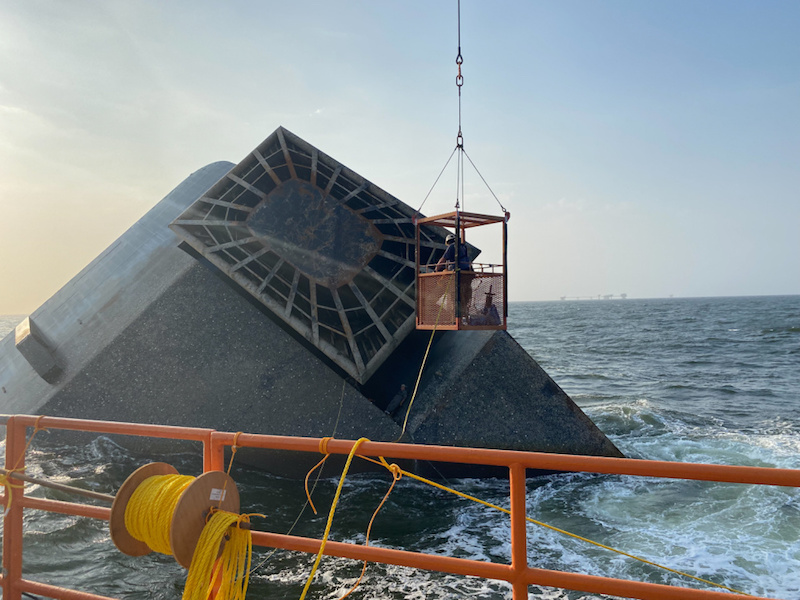Salvage crews completed the removal of diesel fuel from Seacor Power’s fuel tanks, the Coast Guard said yesterday.
Crews removed approximately 20,363 gals. of diesel fuel from the Seacor Power using the hot tapping method, which involves drilling into the fuel tanks, making a hose connection, and transferring the fuel to portable tanks.
Approximately 4,500 gals. of hydraulic fluid remain on the liftboat. The tanks have not been compromised, but are currently inaccessible. The hydraulic fluid will be removed after the vessel is raised.
The Coast Guard continues to monitor for any oil discharges and Seacor Marine, the liftboat's owner, has an Oil Spill Response Organization (OSRO) standing by to respond to any situation in which there is recoverable oil.
Salvage crews will now move to the salvage phase, focusing on removing debris and refloating the vessel.
The timeline for the raising of the vessel depends on many factors including primarily the safety of salvage crews, the weather, and addressing any new structural changes that may occur. The priority is to salvage the vessel in a safe and efficient manner. The raising of the vessel is not expected to occur before June.
There is a Coast Guard safety zone covering a one nautical mile radius around the incident site in effect until June 15.
There is a Federal Aviation Administration temporary flight restriction covering a five-nautical-mile radius around the site, and a 2,000-foot minimum altitude around the site in effect until June 15.
The incident is under investigation by the National Transportation Safety Board and the Coast Guard. Questions regarding the investigation should be directed to the NTSB at (202) 314-6133.





